All Departments
- Cataract Surgery
- Comprehensive Eye Tests
- Ear Conditions
- Eye Surgeries
- Facial Paralysis
- Head & Neck Surgery
- Laryngology
- Micro Ear Surgery
- Nose Conditions
- Nose Surgery
- Paediatric ENT
- Sleep Apnea & Snoring
- Throat Conditions
- Thyroid Diseases & Surgery
- Vertigo
- Vision Tests
Emergency Cases
888 666 4462Opening Hours
- Monday - Saturday: 9.00 am - 2.00 pm, 5.00 pm - 9.00 pm
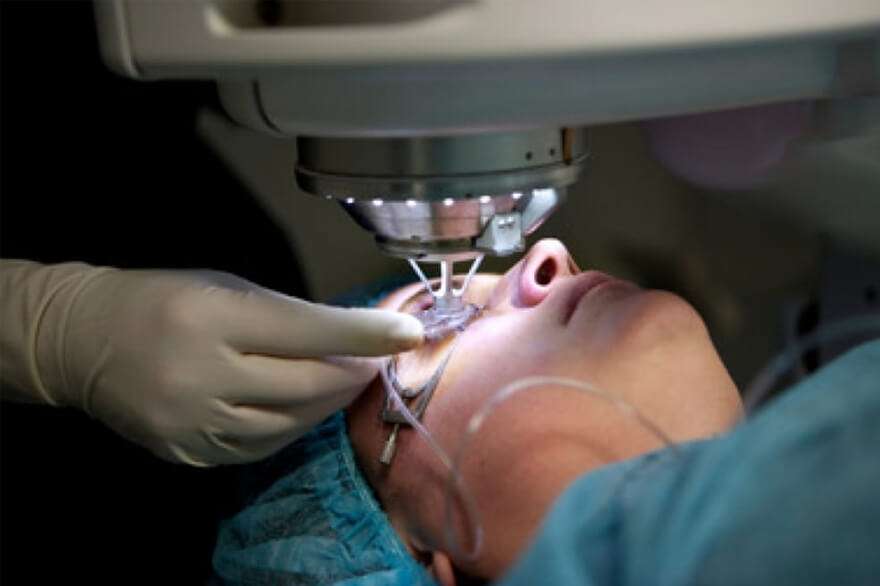
Eye Surgeries
There are many ways to address vision disorders. Surgery can correct problems like cataracts and glaucoma. Other surgeries can improve poor vision so that you can see well without glasses or contact lenses.
Here’s a list of common eye procedures performed at our hospital with the highest success rate.
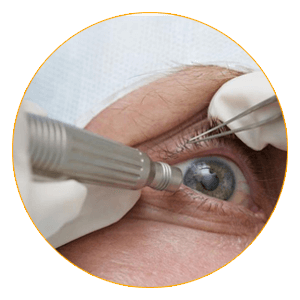
Corneal transplant
Cornea transplant is a procedure that involves replacing your damaged or diseased corneal tissue with healthy corneal tissue from the eye of a deceased human donor, using a special tool to keep your eye open. Doctors can perform a full thickness corneal transplantation (penetrating keratoplasty) or partial thickness transplantation (lamellar keratoplasty).
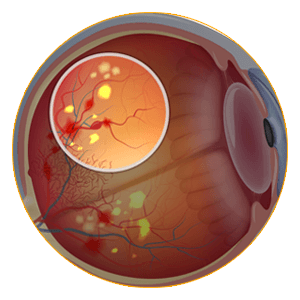
Diabetic Retinopathy Surgery
Diabetic Retinopathy is an eye disorder that can develop if you are diabetic and your blood sugar is not under control. High blood sugar levels can damage blood vessels of the retina in your eyes. In this condition, the blood vessels swell, leak fluid and blood into the retina. Your experience abnormal vision and may see floaters, which are dots or specks that seem to float through your vision During the procedure, the eye surgeon may use a laser to reduce the swelling in your eye and promote new blood vessel growth. The surgery also helps in preventing blood vessel leaks in the future. Even so, you may still have blurry vision and require more laser surgery in the future. Vitrectomy is another type of surgical procedure for diabetic retinopathy, which aims to get rid of leaked blood and scar tissue in your eye as well as laser repair of retinal detachments and treatment of macular holes. It also helps prevent the leaking of blood vessels again. You may need to stay for a short while in the hospital after the surgery is done.
Eye muscle surgery
Strabismus (crossed eyes) is a condition in which the eyes don't align with each other and point in different directions, one eye might drift in, out, up or down. Though surgery is not the only available treatment option, if it is needed, a surgeon attempts to adjust the eye muscles to a proper position by using techniques that weaken or strengthen them. This may include removing a section of muscle or reattaching a muscle to a different point in the eye.
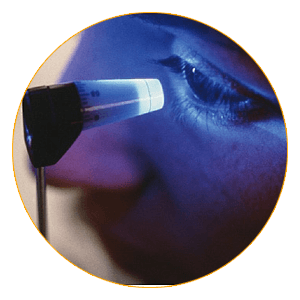
Glaucoma Surgery
Glaucoma results due to the damage to the optic nerve in your eye. A buildup of pressure in the eye or called intraocular pressure (IOP), is the usual cause. Glaucoma can cause blindness. There are two types of surgeries used to treat glaucoma. Both aim to reduce the pressure in your eye. Laser surgery for glaucoma: It is an outpatient procedure so once it's done you can go home. You might notice blurry vision or feel some discomfort afterwards. But you can carry on with your regular activities the next day. Conventional glaucoma surgery is the other option you might need if the laser procedure is not effective. After the surgery, your eyes may water or look red afterwards. And, this is also an outpatient procedure. But it might take about a week before you can return to your regular activities.
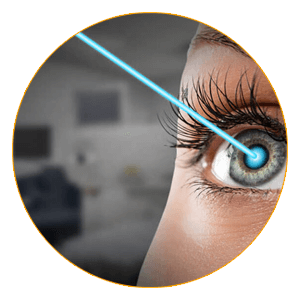
LASIK
LASIK (Laser-Assisted in Situ Keratomileusis). It's a procedure of reshaping the cornea of the eye to enable light entering the eye to focus on the retina without wearing contact lenses or glasses. LASIK, commonly referred to as laser eye surgery is a type of refractive surgery most commonly performed to treat myopia (nearsightedness), hyperopia (farsightedness) and astigmatism. The procedure uses a highly specialized laser to remove tissue under the surface of your cornea, thereby reshaping the cornea so it more accurately focuses light on the retina for improved vision. LASIK is an outpatient procedure, so it doesn't require a hospital stay. It requires only about 30 minutes to treat both eyes. You'll see improvement in your vision within a day or maybe immediately after surgery. You may experience one or two days of eye discomfort.
PRK
Photorefractive keratectomy (PRK) is yet another type of refractive surgery performed to also corrects nearsightedness, farsightedness and astigmatism so you won't need contact lenses or glasses. In this procedure, the doctor will use a laser to change the shape of your cornea and correct the problem of a refractive error in which your eye does not refract (bend) light properly. In contrast to LASIK, PRK does not involve cutting a “flap” in the cornea before reshaping the surface. Some ophthalmologists prefer PRK to LASIK if you have dry eyes or thin corneas and as well the corneas of certain patients are better suited for PRK than LASIK. This procedure takes about 15 minutes to perform on both eyes. Because your doctor works directly on the surface of the cornea, your vision will be blurry and your eyes may hurt some after the surgery. Your vision can gradually improve by 80% in four weeks and by 95% after 12 weeks as you heal. You may not be able to drive for a few weeks after the procedure.
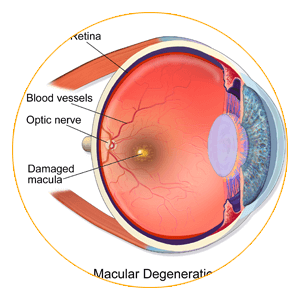
Macular Degeneration Surgery
The macula is the central area of the retina that helps you see greater detail and provides the best color vision. The macula tends to break down as you age. This is called age-related macular degeneration (ARMD). It is of two types: dry type and wet type, the more severe type is wet ARMD. You see dark spots in the center of your vision caused due to leaky blood vessels. Sometimes, laser photocoagulation surgery can help with wet ARMD. The eye doctor uses a laser to burn away part of the macula or unwanted blood vessels. This prevents bleeding and also stops the abnormal growth of blood vessels. This is also an outpatient procedure. Vision is usually blurrier right after the surgery, but you should have improved vision in a few weeks. However, some people often need more laser treatments within a few years.
Retina surgeries
There are 3 types of procedures for repairing a damaged or detached retina, which sometimes may be used in combination.
• Pneumatic retinopexy
• Scleral buckle
• Vitrectomy
The surgery is performed to create small scars that will repair tears or holes in your retina and help hold your retina in place, the doctor may apply a freezing probe (cryopexy) or also use a laser to make a small burn (photocoagulation).
Scleral buckle surgery: During the procedure, the surgeon will put a tiny, flexible band around the white part of your eye (the sclera). This band gently pushes the sides of your eye and moves them inward toward your retina to help it reattach.
Pneumatic retinopexy: During this procedure, the doctor injects a small air bubble into the middle of your eyeball which pushes your retina back into place before the use of freezing or burning treatment to repair any holes or tears; the bubble will disappear on its own over time.
Vitrectomy is similar to pneumatic retinopexy, but it’s a longer surgery that involves the use of a suction tool to remove most of the vitreous humor (the gel-like substance that fills the eye), allowing the doctor better access to the retina and providing room for the bubble.
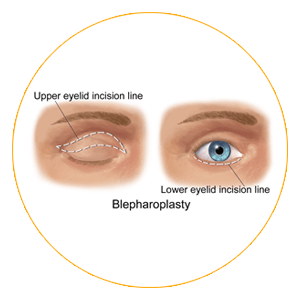
Blepharoplasty
This is a type of surgery done to repair droopy eyelids (Ptosis), the doctor makes a small incision or incisions to remove excess skin and muscle and to remove or reposition fat.
Meet Our Doctors

Dr. Aravind Kumar Alwala
MBBS (Osm)., MSENT specialist, Chief Endoscopic Sinus Surgeon
Make an Appointment
Dr. Laxmi Priya Pallapolu
MBBS (Gold Medalist)., MS Ophthal (FICO)Consultant Ophthalmologist, Chief Phaco Surgeon
Make an Appointment